Don't wanna be here? Send us removal request.
Text
Conch-Shell Trumpet
Artist Unknown
Date 300-550
Medium Hematite (mineral) incised on conch shell
Dimensions 9 × 4 3/4 × 3 3/4 in. (22.9 × 12.1 × 9.5 cm)
Classifications Latin American
Credit Line Gift of Edwin Pearlman and Museum purchase
Object number 86.457
Terms
Deities
Peten
Collections
Ancient American Art
Description
This Early Classic period conch-shell trumpet has four drilled holes so that a scale can be played. When the spire is at the bottom, the piece forms the head and headdress of a god.
Label Text
Conch-Shell Trumpet Maya (Tikal Area, Petén, Guatemala), Early Classic Period, 300–550 C.E. Hematite (mineral) incised on conch shell Gift of Edwin Pearlman and Museum purchase 86.457 One of the most spectacular objects made by the Maya, this decorated shell was played like a trumpet in ceremonies. With its mouthpiece down, the conch’s spiraling form depicts the crowned head of Uc Zip, God of the Trumpet. (One of Uc Zip’s eyes is incised on the shell; the other is a drilled hole.) When played, the horn personified the actual god, the sound of his own voice communicating with other gods and ancestors. With its mouthpiece up (see illustrations), the conch reveals two other figures: the Moon Goddess and Juun Ajaw, a mythic hero who defeated the underworld gods. The accompanying hieroglyphs identify those figures and describe the trumpet’s owner as a k’ayoom, or singer.
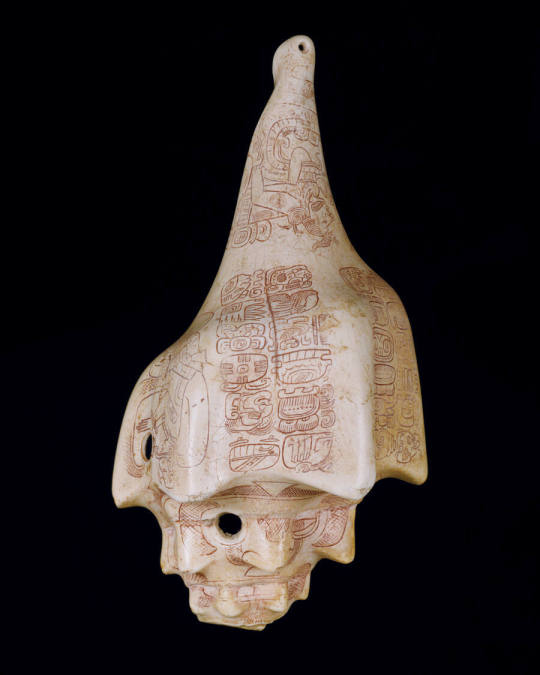
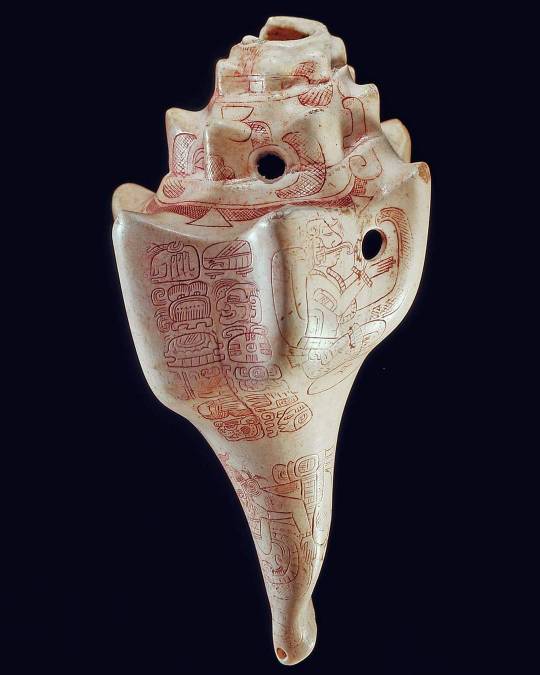
Vía Balamkame
#balamkame
#history#music#music history#art#maya religion#mesoamerica#maya#guatemala#petén department#tikal#uc zip#maya moon goddess#juun ajaw#trumpet#singing#k'ayoom#shells#hematite
1K notes
·
View notes
Text

Road to the Mountain, Norway (by Fabian Fortmann).
#photography#landscape#mountains#fjords#roads#norway#nordland#narvik#tysfjorden#haukøyfjorden#stefjorden#stetind#hermit
644 notes
·
View notes
Text
Lectionary, in Christianity, a book containing portions of the Bible appointed to be read on particular days of the year. The word is also used for the list of such Scripture lessons. The early Christians adopted the Jewish custom of reading extracts from the Old Testament on the Sabbath. They soon added extracts from the writings of the Apostles and Evangelists, which later would be formalized in the canon of Scripture as the Gospels and epistles. During the 3rd and 4th centuries several systems of lessons were devised for churches of various localities. One of the first attempts for a diocese to fix definite readings for special seasons during the year was made by Musaeus of Marseille in the mid-5th century.
At first, the lessons were marked off in the margins of manuscripts of the Scriptures. Later, special lectionary manuscripts were prepared, containing in proper sequence the appointed passages. The Greek Orthodox Church developed two forms of lectionaries, one (Synaxarion) arranged in accord with the ecclesiastical year and beginning with Pascha (Easter) and the other (Mēnologion) arranged according to the civil year (beginning September 1) and commemorating the festivals of various saints and churches. Other national churches produced similar volumes. Among the Western churches during the medieval period, the ancient usage at Rome prevailed, with its emphasis on Advent.
During the 16th-century Reformation the Lutherans and Anglicans made changes in the Roman Catholic lectionaries. Martin Luther was dissatisfied with the choice of many of the lessons from the epistles in the Roman system, and he included a greater proportion of doctrinal passages. In the Anglican church the first edition of The Book of Common Prayer (1549) assigned for each day a passage of the Old Testament and the New Testament to be read at both the morning and evening services. Nearly all the saints’ days were dropped, and the new system assigned chapters of the Bible to be read consecutively.
In 1963 the Second Vatican Council allowed the introduction of the vernacular in the variable parts of the Roman Catholic liturgy, including the scriptural readings of the mass (the liturgy of the Word). A complete revision of the missal, carried out by a postconciliar commission, resulted in a three-year lectionary known as the Ordo Lectionum Missae (1969). This lectionary is arranged in two cycles, one for Sundays and another for weekdays. The Sunday cycle is divided into three liturgical years, labeled A, B, and C. Each Sunday usually has a reading from the Old Testament, a semicontinuous reading from one of the epistles, and a Gospel reading. Year A mostly features the Gospel According to Matthew; Year B reads through the Gospel According to Mark; and Year C showcases the Gospel According to Luke. The Gospel According to John is read during the Easter season in all three years. After three years the cycle starts over again.
The weekday cycle is divided into two years: Year I (odd-numbered years, such as 2023, 2025, etc.) and Year II (even-numbered years, such as 2024, 2026, etc.); the year of the cycle changes on the first Sunday of Advent. The first reading on weekdays may be taken from the either the Old or the New Testament, and usually a single scriptural book is read semicontinuously until it is finished and then a new book is started. The Gospel readings for both years are the same and are also read semicontinuously, beginning with Mark, then Matthew and Luke. As with the Sunday cycle, the Gospel According to John is read during the Easter season. In addition to the Sunday and weekday cycles, the Roman Catholic lectionary also provides readings for the feasts of major saints, for common celebrations such as Marian feasts, for ritual masses such as weddings and funerals, and for various other needs.
Present-day liturgists in many denominations have been active in revising traditional lectionary systems. Many Protestant churches in the United States and other English-speaking areas use the Revised Common Lectionary (1992). A previous version, the Common Lectionary, was assembled in 1983. Both versions are three-year lectionaries that function similarly to the Roman Catholic system.
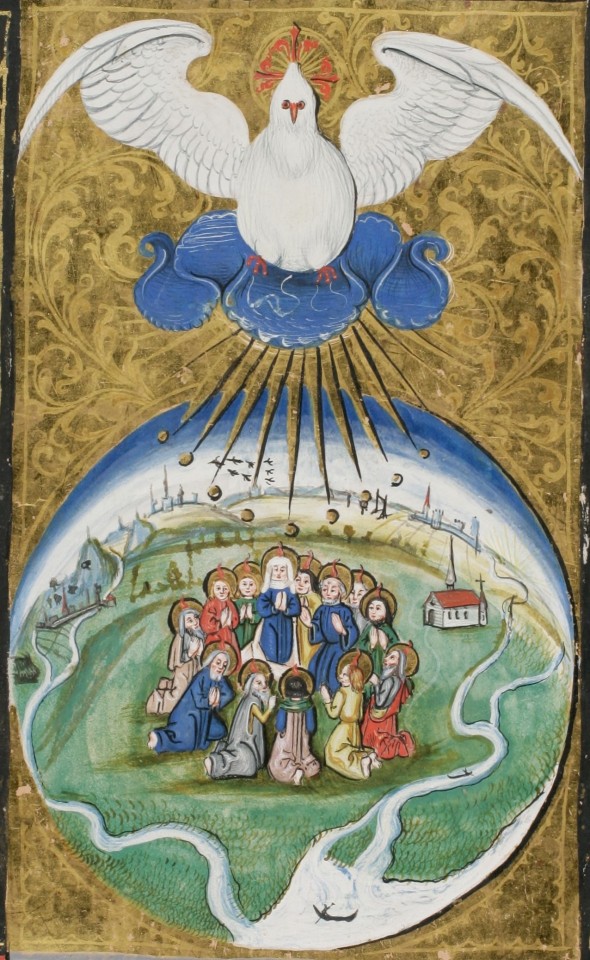

pentecost (the descent of the holy spirit upon mary and the apostles in jerusalem)
illustration from a gospel lectionary, constance (?), c. 1470-80
source: St. Gallen, Stiftsbibl., Cod. Sang. 368, p. 44
#history#christianity#catholicism#anglicanism#art#medieval art#protestant reformation#second vatican council#switzerland#abbey library of saint gall#lectionary#mass#bible#pentecost#church ref#lectionary ref
385 notes
·
View notes
Text

Créteil, l’hôpital Mondor.
70 notes
·
View notes
Photo
he fragment which mentions Baubo's anasyrma is from an Orphic hymn and is five hexameters in length.[12] It is preserved in the Protrepticus of Clement of Alexandria, written in the second century CE:[13]
This said, she drew aside her robes, and showed A sight of shame; child Iacchus was there, And laughing, plunged her hand below her breasts. Then smiled the goddess, in her heart she smiled, And drank the draught from out that glancing cup.[14]
Clement presents the fragment as proof of the depravity of the Eleusinian Mysteries and Greek religion more generally. The context he provides for the quote is that Demeter has rested at Eleusis during her search for her daughter, and Baubo, treating her as a guest, has offered her food and wine. Demeter refuses these due to her mourning; the rejection of hospitality is perceived as a slight by Baubo who responds by showing her genitals.[15]
M. Marcovich interprets Iacchus' role in these verses as simply that of an innocent child who happens to have appeared at the same moment as Baubo is attempting to amuse Demeter, and who is reaching below her breast because he is hungry and she is his nurse (Marcovich assumes the verses belong to a tradition in which Iacchus is the son of Demeter and Baubo his nurse).[16] Baubo's actions are usually interpreted as an attempt to cheer Demeter up, rather than a response to a slight, based on the fact that this is the what happens in The Homeric Hymn to Demeter. Ralph Rosen sees the act as an attempt to cheer Demeter up specifically by mocking her, as is also the case with Iambe.[17] Ralph Rosen notes, however, that no one would have understood this as serious, or contemptuous mockery of the goddess.[18]
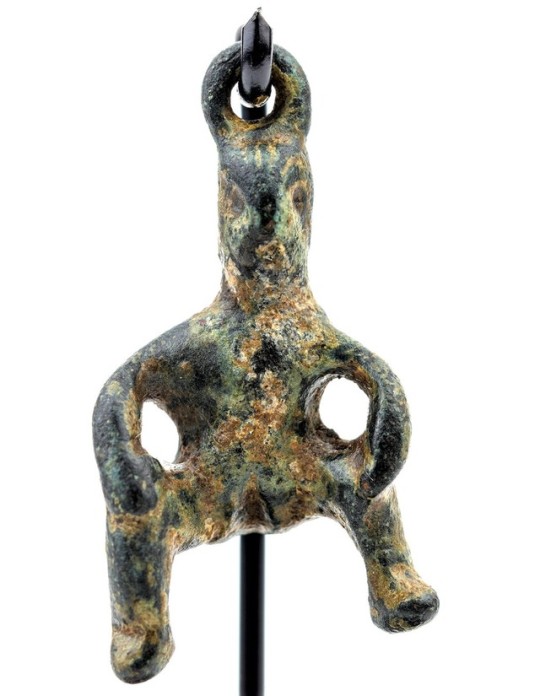
Rare Greek Bronze Amulet of the Goddess Baubo, 5th-3rd Century BC
A suspension hoop is at top of head of the goddess, who is seen nude with her hands on her knees, revealing her over-sized vulva. Baubo was a fun-loving, bawdy, yet wise, goddess who played a crucial role in preserving the fertility of the land in ancient Greece. This piece may have been worn by a person connected with the Eleusinian Mysteries.1.25 inches (3.1cm) high
#history#classics#greek mythology#jewellery#poetry#ancient greece#classical greece#hellenistic greece#baubo#demeter#iacchus#eleusinian mysteries#orphic hymns#homeric hymns
287 notes
·
View notes
Text
“Art washes away from the soul the dust of everyday life.”
— Pablo Picasso (via goodreadss)
8K notes
·
View notes
Photo
Kenau Simonsdochter Hasselaer (1526–1588) was a wood merchant of Haarlem, who became a legendary folk hero for her fearless defense of the city against the Spanish invaders during the siege of Haarlem in 1573.
Biography
She was the daughter of the Haarlem brewer Simon Gerrits and Guerte Koen Hasselaer. When the city was besieged by the Spanish, period diarists reported that all of the townspeople, man, woman, and child, fearlessly helped to rebuild the city defenses that had been destroyed by enemy cannon.[1] One account written in Latin from Delft, mentioned Kenau by name as an unusually fearless woman who worked night and day carrying earth to the city walls to rebuild the defense line.[2]
This (anonymous) account mentioned in the next paragraph how the people of Haarlem stood on these earthworks and threw burning tar wreaths around the necks of the enemy, and described how one Spanish soldier jumped into the river Spaarne to douse the flames only to drown from the weight of his armor. Somehow the story arose that it was Kenau who threw these 'tar wreaths'. Kenau’s role as an earth carrier was soon glorified into a full-fledged soldier who was honored at the centennial celebrations of independence from Spain in 1673 and again during the bicentenary in 1773. By the 19th century she had led an army of 300 women against the Spanish, which had even been commemorated in a romantic painting by Barent Wijnveld and J.H. Egenberger.
Authenticity
It was the Haarlem doctor and historian Dr. C. Ekama who first questioned the Kenau legend in 1872 on the eve of the tricentenary celebrations. He pointed out that neither she nor any other woman had been placed on the list of 'war criminals' after the Spanish took control, while her 18-year-old cousin Pieter Dirksz Hasselaer, a member of the schutterij, was on the list and was arrested, though later released.[3] However, women were generally not seen as war criminals or beheaded, and thus not mentioned as such. Additionally, women fighting to defend a city were not uncommon in that time such as during the attack of Antwerp in 1576 (Spaanse Furie) where a citizen's army of 12,000 men and women built ramparts and fought against the Spanish.
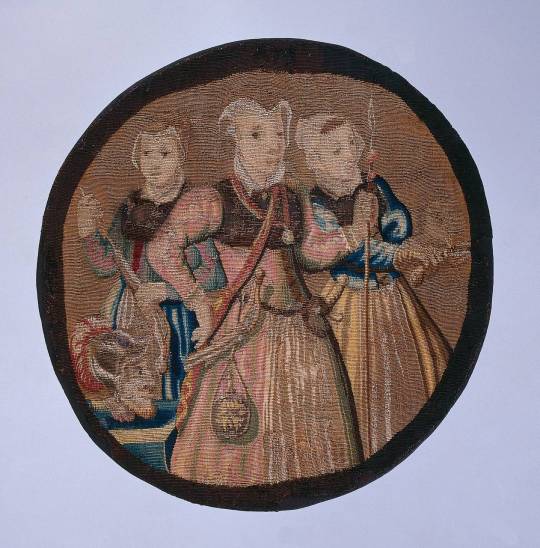
Kenau Simonsdochter Hasselaar and two fellow combatants, c.1590-1610. (via)
Kenau was a businesswoman who helped defend the city of Haarlem when it was besieged by the Spanish during the Eighty Years War (1568-1648).
#history#military history#textiles#embroidery#eighty years' war#siege of haarlem#spanish fury#sack of antwerp#habsburg netherlands#netherlands#spain#haarlem#antwerp#kenau simonsdochter hasselaer
15 notes
·
View notes
Photo
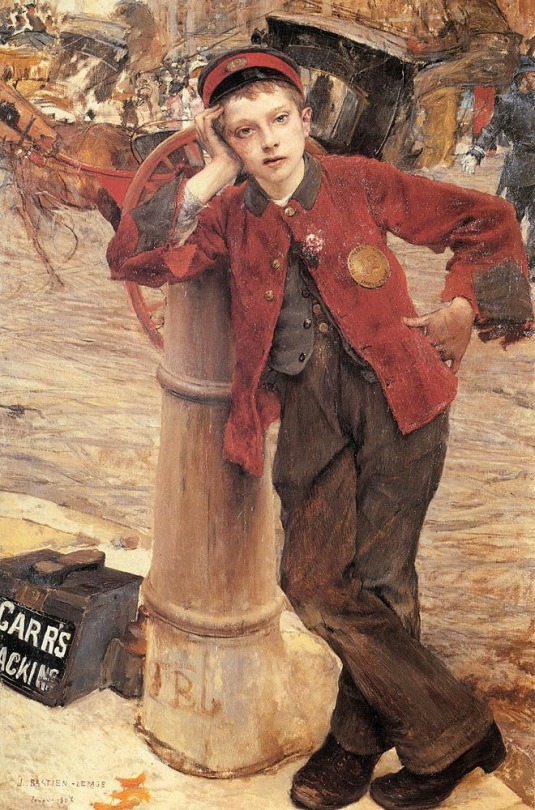
The London Bootblack, 1882 by Jules Bastien-Lepage (French, 1848–1884)
629 notes
·
View notes
Text
I think you carry the people you’ve loved with you forever, not in a ‘you can never get over them’ way but more like loving them changed you and it meant something and you have to make peace with that
52K notes
·
View notes
Text
I love used books.
I love their cracked spines and their yellowed pages.
I love their frayed bindings and dog-eared corners.
I love the distinct book smell when I open them for the first time.
I love the writings in their margins, fleeting thoughts of those who read before me.
I love how they easily fit into my hands after owner after owner has molded them to fit the human form.
I love what is left behind in between their pages—a cafe card, a forgotten bookmark, a concert program.
I love the feeling that I am not alone when I read them. They have had years of readers pour over their pages.
I love used books for their stories. For their wisdom.


577 notes
·
View notes
Text
Weekly Recap (24th – 29th September)
Study
Read wh.org articles – Mesopotamian Religion
Read 2 articles (Russia)
Read 1 article (misc)
38 shorter readings
Reread 32 shorter readings
Read 2 poems
Reading (non-fiction)
Read A World Undone: The Story of the Great War, 1914 to 1918 – Paris in 1914 || ch 8 || London in 1914 || ch 9 || The Junkers || ch 10 || The French Commanders
Read On the Trail of Genghis Khan: An Epic Journey Through the Land of the Nomads – ch 9-13
Read My Childhood in Mongolia – ch 9-16
Read Walking Home from Mongolia – author's note || preface || ch 1-6
Read Catherine the Great: Portrait of a Woman – ch 6
Read The Shame of Survival: Working Through a Nazi Childhood – ch 7
Read All About Love: New Visions – ch 1
Reading (fiction)
Read Wives and Daughters (Elizabeth Gaskell) – ch 37-46
Languages
German adjectives – [article] [adj] [noun] [rest of sentence]
Writing
Wrote MGL (Aisholpan) Step 0 – 2029 words
Discussed captivity scene (Wednesday) with S.
Music
Exercise
Monday – about 3km (?) exercycle
Wednesday – short walk (1km?)
Thursday – 4.2km exercycle
Saturday – hospital march
Jumps (x10) – 1 4 1 1 4 0 0
Flat (etc)
Cooking (Monday)
Dishes (Monday)
Took meat out freezer (Thursday)
Put dishes away (Thursday)
Other
Knitted 20 scarf rows
Doctor's appointment
Shopping list (Thursday)
Puzzles
Special Monthly Loop
12 Wheel Words (online) (1 without clues)
3 Killer Sudoku
2 Suguru
6 futoshiki
2 mini sudoku
5 mental sums
2 adders
2 steps
3 add ups
1 say so
1 sum fun
0 notes
Text
Possibly Ha or Shambaa Tanzania Eastern and Southern Africa
Healers throughout eastern Africa create a wide variety of protective objects like these figures as part of ritual practices that connect human and spiritual worlds. Their forms are as diverse as the cultural groups who use them. Medicine objects dressed in metal bracelets, beaded jewelry, knotted or braided cloth, and other decorations attract and embody desirable spiritual forces. Historically, materials that came from the east and were traded inland from the Indian Ocean—such as shells, wire, currency, or the beads that decorate these figures—hold special energy and elevated significance.
Medium: Gourd, wire, cloth, glass beads, and hair
Dimensions: Each h: H.: 25.4 cm (10 in.)

Pair of Figures - 20th century, Tanzania
#history#medical history#jewellery#trade#tanzania#bantu peoples#ha people#shambaa people#nyamwezi people#shells#beads
4 notes
·
View notes
Photo
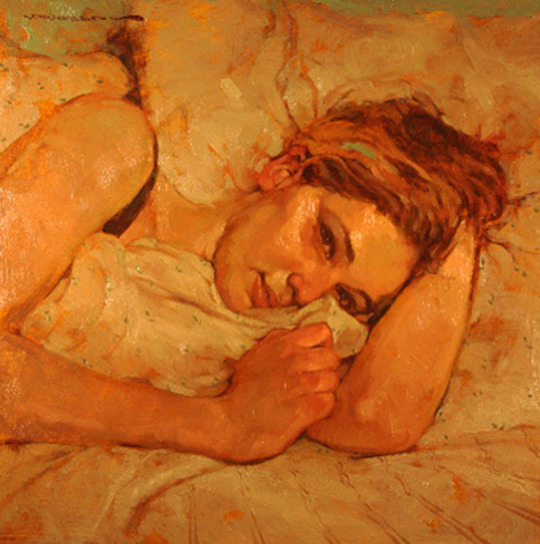
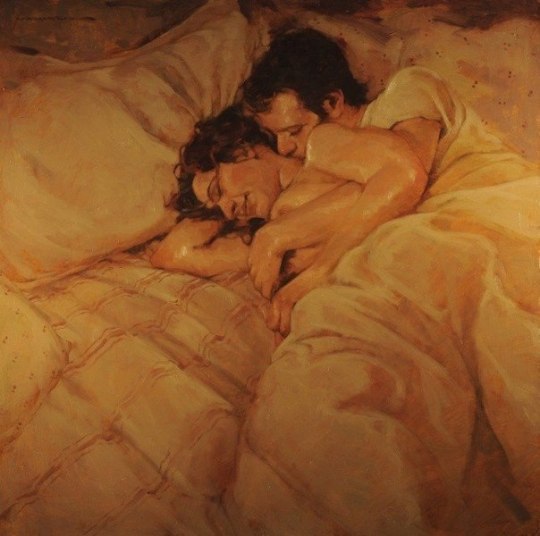
Bedroom Eyes, Joseph Lorusso;
Tenderness and Love, Joseph Lorusso
5K notes
·
View notes
Photo

Gordes, Provence, France (by Velda Ruddock)
2K notes
·
View notes
Text

Frosty morning at Bodiam Castle / England (by Viktoria Rodriguez).
1K notes
·
View notes
Photo
Did You Know?
The green patina of this bronze necklace is a result of the oxidation process.
Description
45 separately cast pendants overlap one another when strung together and hung, reversing course at the bottom.
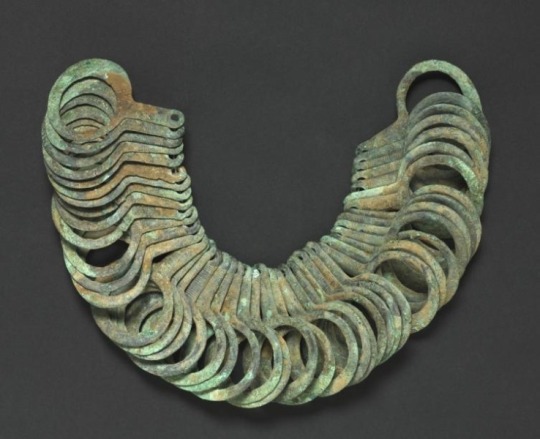
Northern Greek bronze necklace with hanging pendants from 8th century BCE. From the collection of the Cleveland Museum of Art.
#history#classics#jewellery#science#chemistry#ancient greece#archaic greece#necklaces#bronze#oxidation
28 notes
·
View notes
Photo

The Wood Engraver, 1882 by Charles Frederick Ulrich (American, 1858–1908)
2K notes
·
View notes